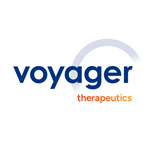Release Details
Voyager Selects Tau Silencing Gene Therapy Development Candidate for Alzheimer’s Disease
- Candidate VY1706 demonstrates significant reductions of tau at low doses in NHP study; IND and CTA filings anticipated in 2026 -
- VY1706 is the fifth neuro gene therapy development candidate nominated leveraging Voyager’s IV-delivered, CNS-penetrant TRACER capsids -
VY1706 combines a potent siRNA construct to decrease the expression of tau with an IV-delivered, blood-brain barrier-penetrant TRACER™ capsid. In a non-human primate (NHP) study, a single dose of VY1706 resulted in reductions in tau mRNA levels of 50% to 73% across the cerebral cortex, including in areas of the brain where tau accumulates during progression of Alzheimer’s disease. Voyager expects to present these and additional data at an upcoming scientific conference.
“The nomination of this tau silencing development candidate VY1706, along with the ongoing clinical trial of our anti-tau antibody VY7523, demonstrate our conviction that tau is an important target in Alzheimer’s disease,” said
About Alzheimer’s Disease
Alzheimer’s disease is a progressive neurodegenerative disease estimated to affect 7 million people in the
About the TRACER™ Capsid Discovery Platform
Voyager’s TRACER™ (Tropism Redirection of AAV by Cell-type-specific Expression of RNA) capsid discovery platform is a broadly applicable, RNA-based screening platform that enables rapid discovery of novel AAV capsids to enable gene therapy. Voyager has leveraged TRACER to create multiple families of novel capsids that, following intravenous delivery in preclinical studies, harness the extensive vasculature of the central nervous system (CNS) to cross the blood-brain barrier and transduce a broad range of CNS regions and cell types. In cross-species preclinical studies (rodents and multiple non-human primate species), intravenous delivery of TRACER-generated capsids resulted in widespread payload expression across the CNS at relatively low doses, enabling selection of multiple development candidates in Voyager’s wholly-owned and partnered gene therapy programs for neurologic diseases.
About
Forward-Looking Statements
This press release contains forward-looking statements for the purposes of the safe harbor provisions under The Private Securities Litigation Reform Act of 1995 and other federal securities laws. The use of words such as “expect,” “anticipate,” “potential,” “may,” or “continue,” and other similar expressions are intended to identify forward-looking statements.
For example, all statements Voyager makes regarding Voyager’s ability to advance its AAV-based gene therapy programs and tau antibody program, including expectations for Voyager’s achievement of preclinical and clinical development milestones for its potential development candidates, such as the identification of lead development candidates, IND and CTA filings, the initiation of clinical trials, clinical trial enrollment, and the generation of clinical data and proof-of-concept; Voyager’s expectations for the presentation of additional data from its tau silencing gene therapy development candidate at a future scientific conference; the potential for an antibody or gene therapy targeting tau to impact tau accumulation in a human brain and for this impact to correlate to clinical benefit; and the potential for third-party clinical data to inform Voyager’s clinical development plans are forward looking.
All forward-looking statements are based on estimates and assumptions by Voyager’s management that, although Voyager believes such forward-looking statements to be reasonable, are inherently uncertain and subject to risks and uncertainties that may cause actual results to differ materially from those that Voyager expected. Such risks and uncertainties include, among others, the expectations and decisions of regulatory authorities; the timing, initiation, conduct and outcomes of Voyager’s preclinical and clinical studies; the availability of data from clinical trials; the availability or commercial potential of product candidates under collaborations; the success of Voyager’s product candidates; the willingness and ability of Voyager's collaboration partners to meet obligations under collaboration agreements with Voyager; the continued development of Voyager’s technology platforms, including Voyager’s TRACER platform and its antibody screening technology; Voyager’s scientific approach and program development progress, and the restricted supply of critical research components; the development by third parties of capsid identification platforms that may be competitive to Voyager’s TRACER capsid discovery platform; Voyager’s ability to create and protect intellectual property rights associated with the TRACER capsid discovery platform, the capsids identified by the platform, and development candidates for Voyager’s pipeline programs; the possibility or the timing of Voyager’s receipt of program reimbursement, development or commercialization milestones, option exercise, and other payments under Voyager’s existing licensing or collaboration agreements; the ability of Voyager to negotiate and complete licensing or collaboration agreements with other parties on terms acceptable to Voyager and the third parties; the success of programs controlled by third-party collaboration partners in which Voyager retains a financial interest; the ability to attract and retain talented directors, employees, and contractors; and the sufficiency of Voyager’s cash resources to fund its operations and pursue its corporate objectives.
These statements are also subject to a number of material risks and uncertainties that are described in Voyager’s most recent Annual Report on Form 10-K filed with the
Contacts
Investors:
Media:
References:
i. Alzheimer’s Association. 2023 Alzheimer’s Facts and Figures. Available at: https://www.alz.org/media/Documents/alzheimers-facts-and-figures.pdf. Accessed
ii. Gustavsson A, Norton N, Fast T, et al. Global estimates on the number of persons across the Alzheimer’s disease continuum. Alzheimer’s Dement. 2023; 19: 658–670. doi: 10.1002/alz.12694.
iii. Penn Medicine. The 7 Stages of Alzheimer’s Disease. Available at: https://www.pennmedicine.org/updates/blogs/neuroscience-blog/2019/november/stages-of-alzheimers. Accessed
iv. USAgainstAlzheimer’s. The Alzheimer’s Disease Crisis – By the Numbers. Available at: The Alzheimer’s Disease Crisis – By the Numbers | UsAgainstAlzheimer’s (usagainstalzheimers.org). Accessed:

Source: Voyager Therapeutics, Inc.


